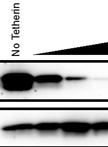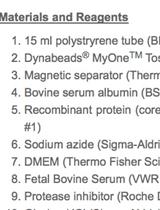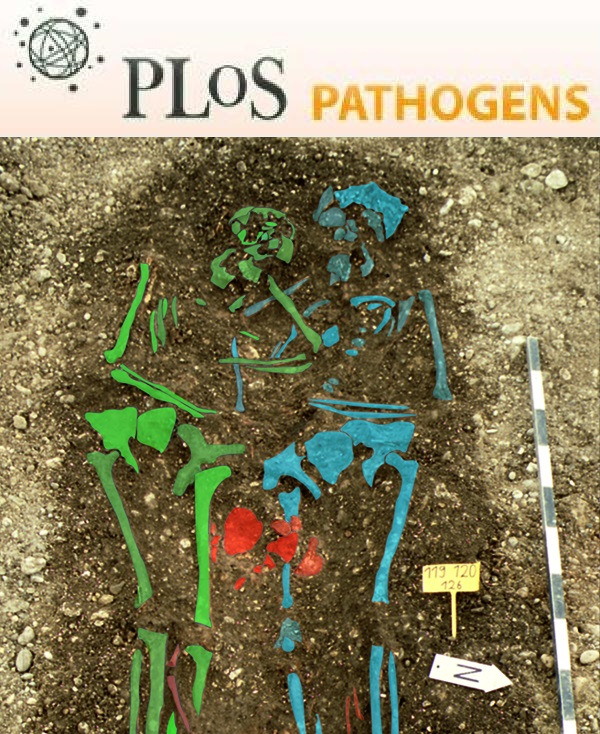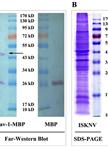- Submit a Protocol
- Receive Our Alerts
- Log in
- /
- Sign up
- My Bio Page
- Edit My Profile
- Change Password
- Log Out
- EN
- EN - English
- CN - 中文
- Protocols
- Articles and Issues
- For Authors
- About
- Become a Reviewer
- EN - English
- CN - 中文
- Home
- Protocols
- Articles and Issues
- For Authors
- About
- Become a Reviewer
Co-immunoprecipitation of Flag-TLR3 or Myc-MSR1 with HCV RNA
Published: Vol 4, Iss 5, Mar 5, 2014 DOI: 10.21769/BioProtoc.1061 Views: 10690
Reviewed by: Fanglian He

Protocol Collections
Comprehensive collections of detailed, peer-reviewed protocols focusing on specific topics
Related protocols

HIV-1 Virus-like Particle Budding Assay
Nathan H Vande Burgt [...] Paul Bates
Jul 20, 2013 11098 Views

Coupling of HIV-1 gp120-derived Core Protein to Paramagnetic Beads and Adsorption Assays
Jidnyasa Ingale and Richard T Wyatt
Oct 5, 2015 7320 Views
Abstract
Co-immunoprecipitation assay of TLR3-Flag or Myc-MSR1 with HCV RNA is used to identify direct interaction of viral RNA with host proteins that recognize viral RNA to initiate interferon (IFN) signaling, a crucial antiviral response of the host cells. Both Toll-like receptor 3 (TLR3) and class-A scavenger receptor type 1 (MSR1) proteins recognize viral double-stranded RNA (dsRNA) which may be released into the extracellular milieu or spread from HCV-infected cells to uninfected neighbor cells via cell-to-cell contact, resulting in IFN-β activation that restricts viral propagation. We have found that MSR1 binds extracellular dsRNA, mediating its endocytosis and transport toward the endosome where it is engaged by TLR3, thereby triggering IFN responses in both infected and uninfected cells. We used this assay to demonstrate the pivotal role of MSR1 in mediating TLR3-recognition of the HCV RNA. The assay described in this protocol is based on the conventional protein immunoprecipitation protocol with conditioned buffers that prevent nonspecific RNA degradation by RNase present in the lysate. RNA molecules associated with the Flag-tagged protein were trapped by a specific antibody followed by Protein G capture, extracted and detected quantitatively by RT-PCR assay, followed by agarose-gel electrophoresis for visualization. This method can also be applied to detection of other protein-RNA interactions.
Keywords: PAMP receptorMaterials and Reagents
- Huh-7.5 cells (obtained from Apath, LLC) expressing TLR3-Flag (or other cells stably/transiently expressing Flag/Myc-tagged protein)
- DMEM (Life Technologies, catalog number: 11995065 )
- 10% heat-inactivated FBS (Life Technologies, catalog number: 26140079 )
- Penicillin-streptomycin (Life Technologies, catalog number: 15140-148 )
- L-Glutamine (Life Technologies, catalog number: 25030-081 )
- Non-essential amino acids (Life Technologies, catalog number: 11140050 )
- HCV strain HJ3-5 stock prepared in cell culture medium (see Reference 2)
- DPBS (Life Technologies, catalog number: 14190-144 )
- RNase inhibitor (RNaseOUT) (Life Technologies, catalog number: 10777-019 )
- Protease inhibitor (Complete Protease Inhibitor Cocktail Tablets) (Roche Diagnostics, catalog number: 1697498 )
- Triton X-100 (Sigma-Aldrich, catalog number: T9284 )
- Anti-Flag (M2) and anti-Myc (9E10) monoclonal antibodies (Sigma-Aldrich, catalog numbers: F1804 and M4439 ) and mouse IgG control (Life Technologies, catalog number: 02-6502 )
- Protein G sepharose (General Electric Company , catalog number: 17-0618-01 )
- TRIzol (Life Technologies, catalog number: 15596-026 )
- Molecular biology grade water (Corning, catalog number: 46-000-CM )
- Agarose (GenePure LE Agarose) (BioExpress, GeneMate, catalog number: E-3120-500 )
- Protein Assay Dye Reagent Concentrate (Bio-Rad Laboratories, catalog number: 500-0006 )
- Platinum® Taq DNA Polymerase (Life Technologies)
- Culture medium (see Recipes)
- Lysis buffer (see Recipes)
Equipment
- 100 mm plates (FalconTM, catalog number: 353003 )
- Cell scraper (FalconTM, catalog number: 353085 )
- Electrophoresis Gel Box
- Tube Rotator (Fisher Scientific, catalog number: 05-450-200 )
- Centrifuge (Eppendorf, catalog number: 5415R )
- Superscript III One-step RT-PCR system (Life Technologies, catalog number: 12574-018 )
Procedure
- Preparation of HCV infected cells
- Seed the Huh-7.5 cells (1.5 x 106 per dish) stably expressing TLR3-Flag onto a 10 cm dish and incubated overnight.
- Inoculate HCV (strain HJ3-5) at an MOI of 1 (5 ml of HJ3-5 stock at 3 x 105 FFU/ml) for 6 h, remove the inoculum, and then replace with 10 ml fresh culture medium.
- Incubate cells at 37 °C in 5% CO2 for 72 h.
- Seed the Huh-7.5 cells (1.5 x 106 per dish) stably expressing TLR3-Flag onto a 10 cm dish and incubated overnight.
- Preparation of the lysates
- Aspirate culture medium, wash cells twice with DPBS, and scrape the cells into 50 ml tube.
- Centrifuge at 800 x g for 3 min at 4 °C, and remove the supernatant.
- Resuspend the cell pellet in 1 ml lysis buffer, and rotate the lysate for 5-6 h at 4 °C.
- Centrifuge the lysate at 15,700 x g for 20 min at 4 °C.
- Transfer the supernatant to 1.5 ml tube and place on ice, and determine the protein content using Protein Assay Kit.
- Aspirate culture medium, wash cells twice with DPBS, and scrape the cells into 50 ml tube.
- Immunoprecipitation
- Transfer the cell lysate (20 μg of total protein) to a new 1.5 ml tube.
- Add 1 μg of anti-Flag antibody or mouse IgG control to the lysate and rotate overnight at 4 °C.
- Add 20 μl Protein G sepharose to the lysate and rotate for 2-3 h at 4 °C.
- Centrifuge at 800 x g for 3 min at 4 °C.
- Aspirate the supernatant, wash beads with 1 ml lysis buffer and rotate for 10 min at 4 °C.
- Centrifuge at 800 x g for 3 min at 4 °C.
- Repeat steps C4-5 twice.
- Suspend the sepharose in 100 μl DPBS and use half for RNA extraction and the remainder for Western blotting to detect the immunoprecipitated protein.
- Transfer the cell lysate (20 μg of total protein) to a new 1.5 ml tube.
- RNA extraction and RT-PCR
- Extract RNA from the sepharose beads by vortexing 15 sec in TRIzol reagent, followed by the standard protocol as indicated in the manufacturer’s instruction, and suspend the RNA pellet in 50 μl of nuclease-free water (optional: Add 1 μl of Glycogen before the precipitation of RNA with Isopropanol).
- Detect HCV RNA bound to TLR3-Flag with SuperScriptIII One-Step RT-PCR System with Platinum® Taq DNA Polymerase using an HCV-specific primer pair HCV84FP, 5’-GCCATGGCGTTAGTATGAGTGT-3’; HCV 303RP, 5’-CACCCTATCAGGCAGTACCACAA-3’, at an annealing temperature of 55 °C, followed by gel electrophoresis in 1.5% agarose gel. Specific bands (220 bp) can be detected typically with 35-40 PCR cycles.
- Extract RNA from the sepharose beads by vortexing 15 sec in TRIzol reagent, followed by the standard protocol as indicated in the manufacturer’s instruction, and suspend the RNA pellet in 50 μl of nuclease-free water (optional: Add 1 μl of Glycogen before the precipitation of RNA with Isopropanol).
Recipes
- Culture medium
DMEM
10% heat-inactivated FBS
Penicillin-streptomycin
L-Glutamine
Non-essential amino acids
- Lysis buffer
1x DPBS
0.1% Triton X-100
1x Protease inhibitor cocktail
100 U/ml RNaseOUT
Acknowledgments
This work was supported in part by grants from the National Institutes of Health (RO1-AI095690) and the University Cancer Research Fund. This protocol is adapted from previous work by Dansako et al. (2013).
References
- Dansako, H., Yamane, D., Welsch, C., McGivern, D. R., Hu, F., Kato, N. and Lemon, S. M. (2013). Class A scavenger receptor 1 (MSR1) restricts hepatitis C virus replication by mediating toll-like receptor 3 recognition of viral RNAs produced in neighboring cells. PLoS Pathog 9(5): e1003345.
- Yi, M., Ma, Y., Yates, J. and Lemon, S. M. (2007). Compensatory mutations in E1, p7, NS2, and NS3 enhance yields of cell culture-infectious intergenotypic chimeric hepatitis C virus. J Virol 81(2): 629-638.
Article Information
Copyright
© 2014 The Authors; exclusive licensee Bio-protocol LLC.
How to cite
Readers should cite both the Bio-protocol article and the original research article where this protocol was used:
- Yamane, D., Dansako, H. and Lemon, S. M. (2014). Co-immunoprecipitation of Flag-TLR3 or Myc-MSR1 with HCV RNA. Bio-protocol 4(5): e1061. DOI: 10.21769/BioProtoc.1061.
- Dansako, H., Yamane, D., Welsch, C., McGivern, D. R., Hu, F., Kato, N. and Lemon, S. M. (2013). Class A scavenger receptor 1 (MSR1) restricts hepatitis C virus replication by mediating toll-like receptor 3 recognition of viral RNAs produced in neighboring cells. PLoS Pathog 9(5): e1003345.
Category
Microbiology > Microbial biochemistry > Protein > Immunodetection
Biochemistry > RNA > RNA-protein interaction
Biochemistry > Protein > Immunodetection > Immunoprecipitation
Do you have any questions about this protocol?
Post your question to gather feedback from the community. We will also invite the authors of this article to respond.
Share
Bluesky
X
Copy link










